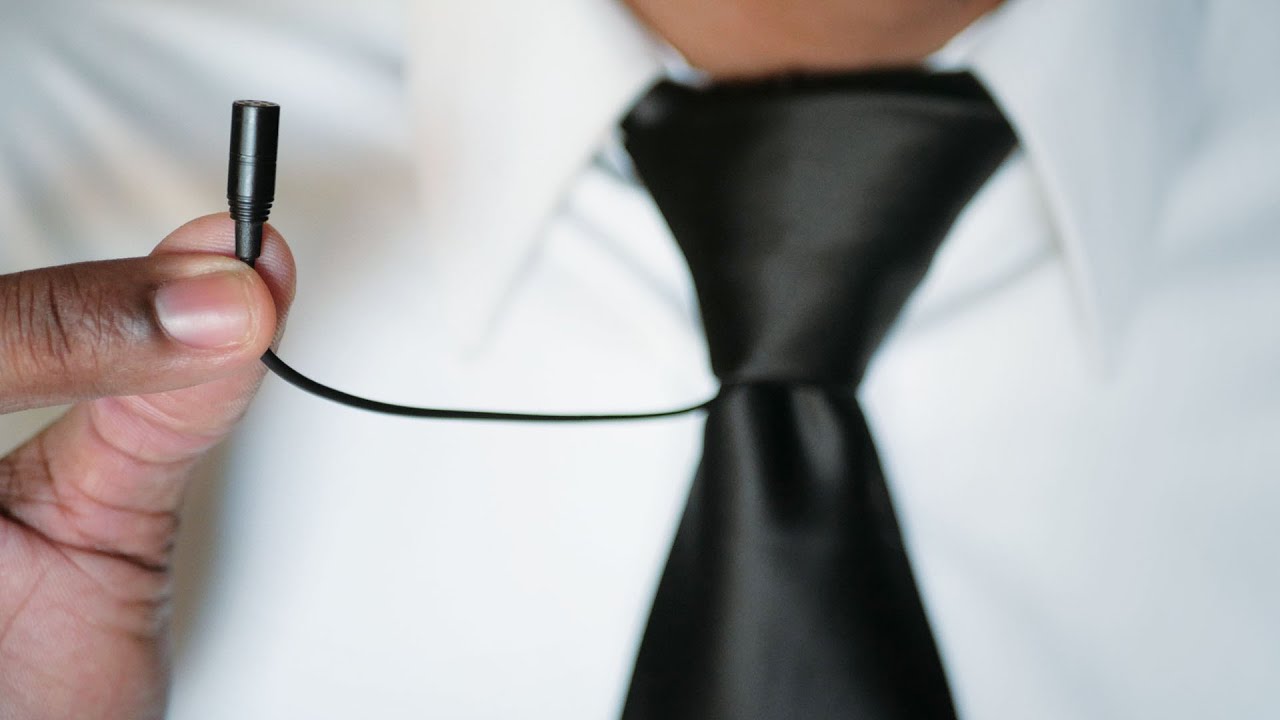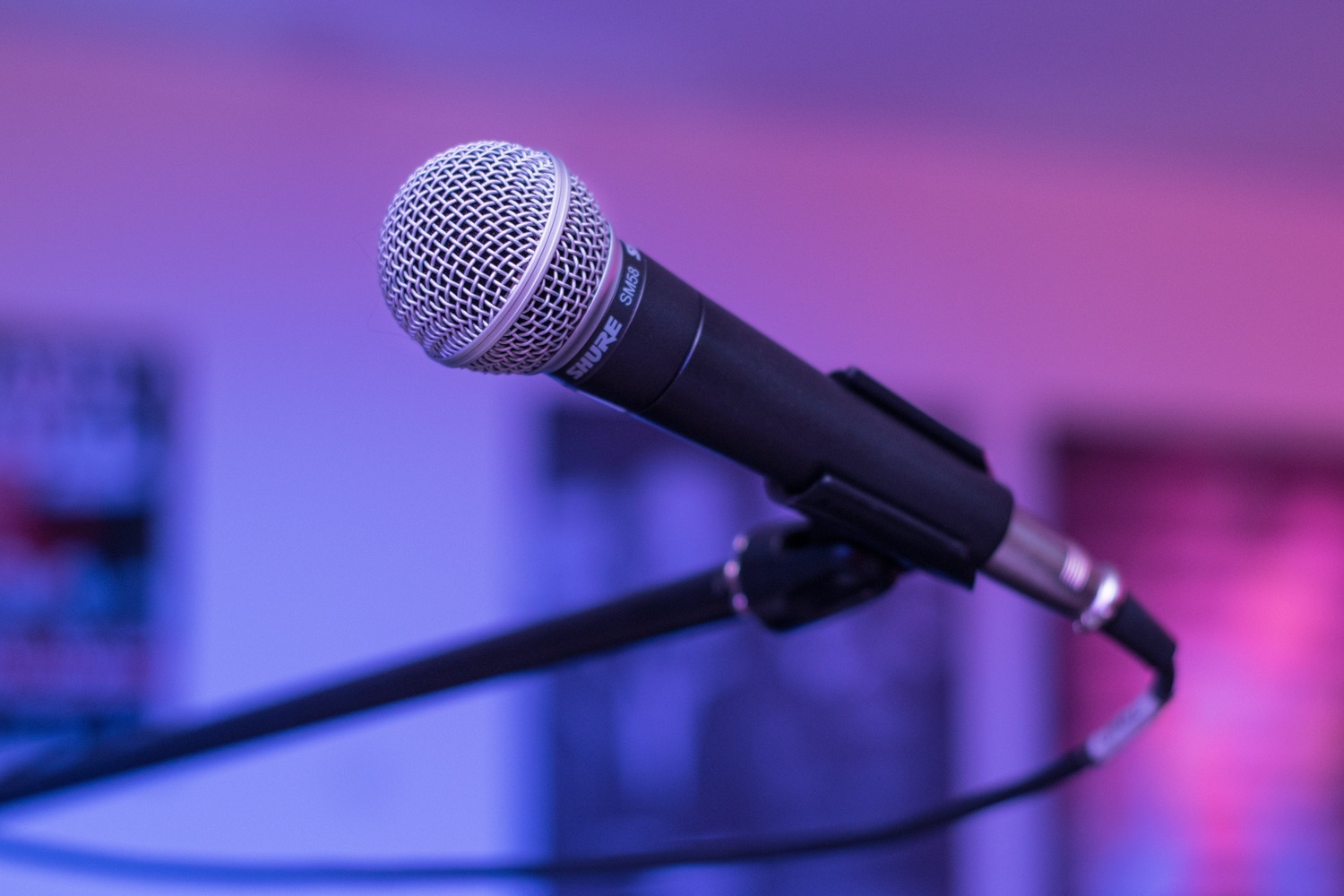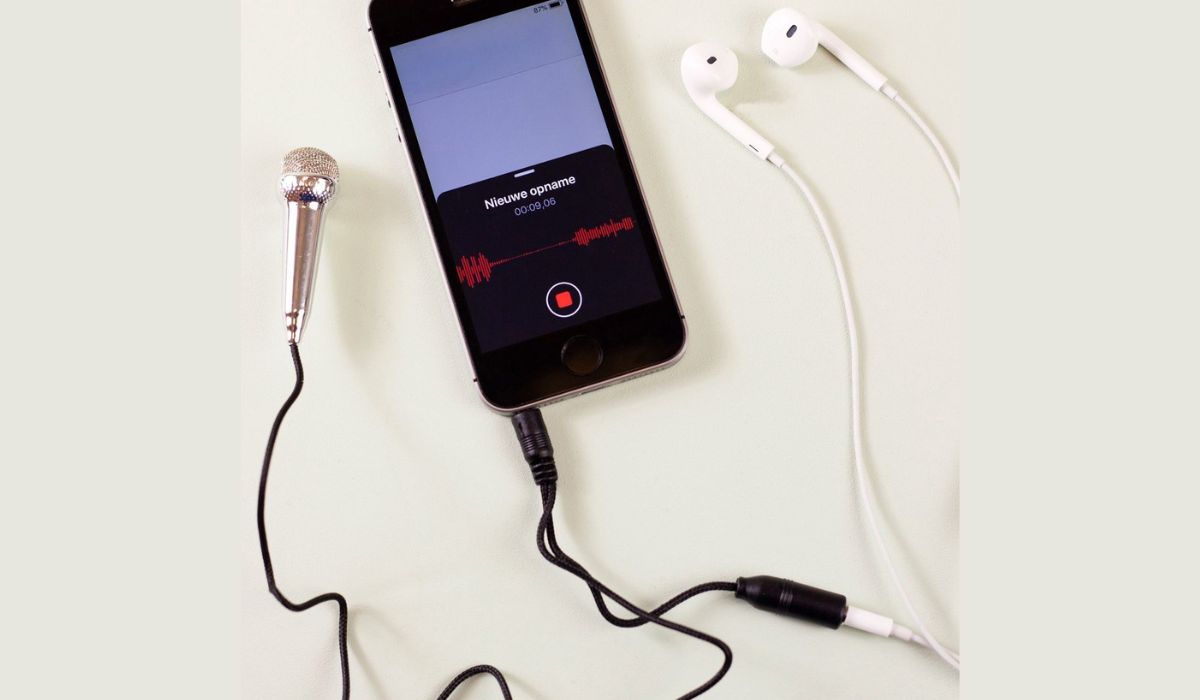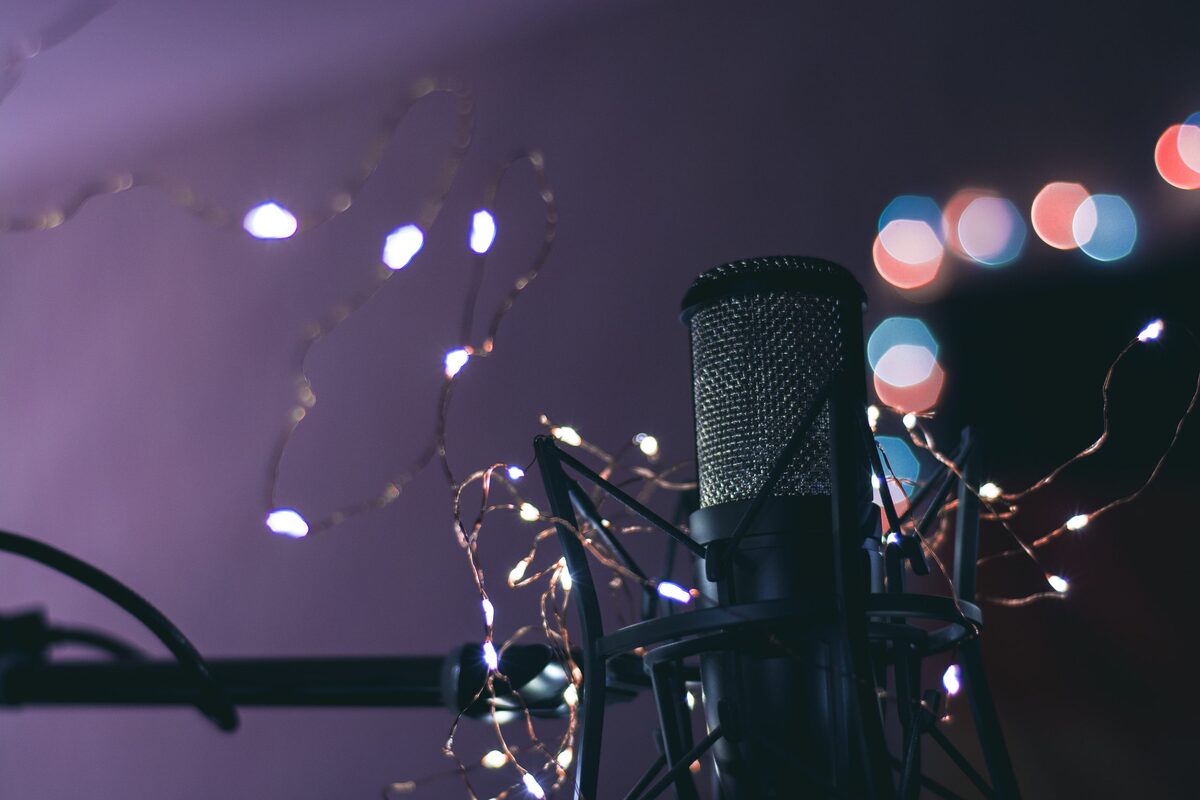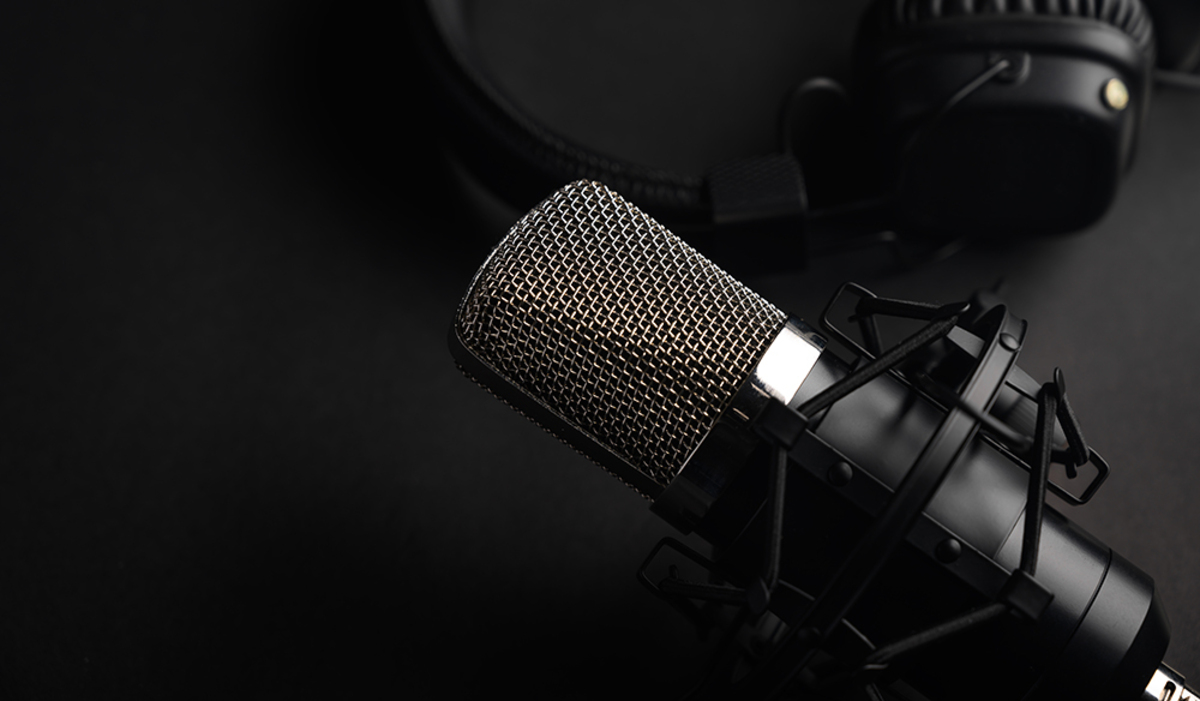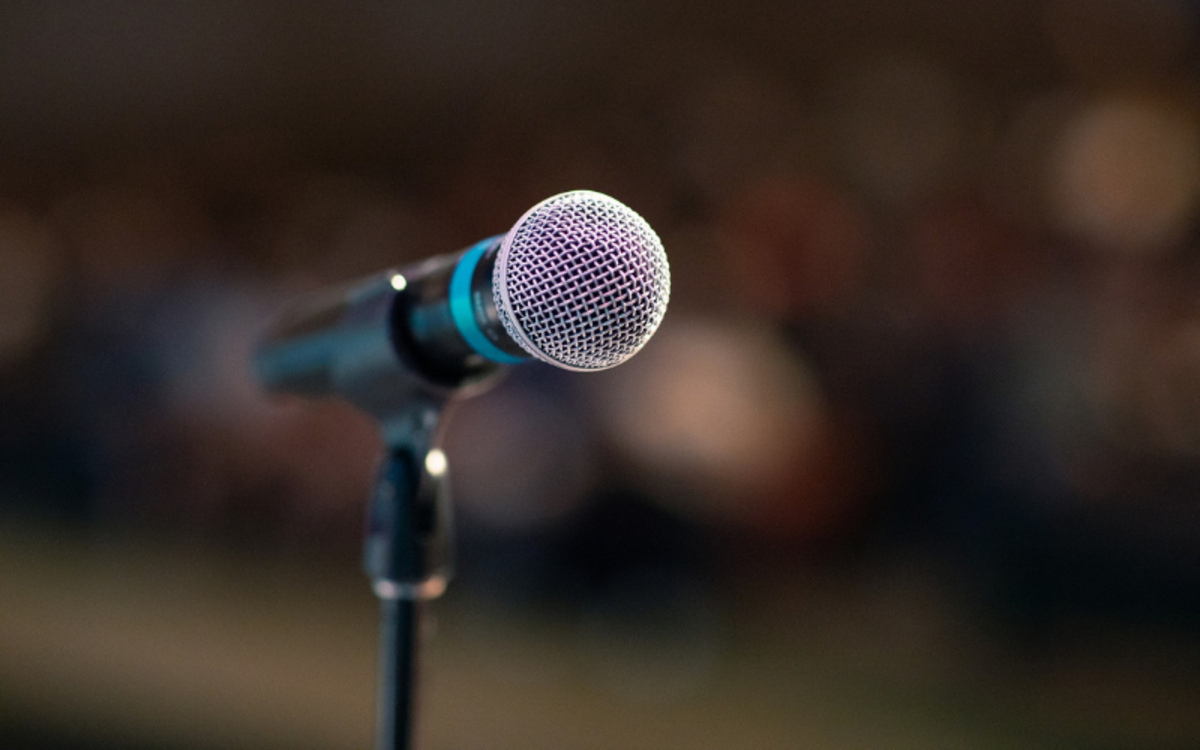Home>Devices & Equipment>Microphone>How To Bass Boost Microphone


Microphone
How To Bass Boost Microphone
Published: February 16, 2024
Learn how to bass boost your microphone for better sound quality. Follow these simple steps to enhance your microphone's audio performance.
(Many of the links in this article redirect to a specific reviewed product. Your purchase of these products through affiliate links helps to generate commission for AudioLover.com, at no extra cost. Learn more)
Table of Contents
Introduction
Welcome to the world of microphone bass boosting! Whether you're a podcaster, musician, or content creator, the quest for the perfect sound is a never-ending journey. Harnessing the power of bass can add depth, richness, and warmth to your audio recordings, elevating them to a whole new level. In this comprehensive guide, we will delve into the art of bass boosting microphones, exploring both software and hardware solutions to help you achieve that coveted low-end punch.
Bass boosting a microphone involves enhancing the low-frequency response of the audio signal captured by the mic. This process can bring out the full-bodied, resonant tones that are essential for creating impactful and immersive audio experiences. By understanding the nuances of bass boosting, you can unlock the potential of your microphone, unleashing a sonic presence that commands attention.
Whether you're aiming to capture the thunderous rumble of a bass guitar, the commanding timbre of a podcast host's voice, or the deep resonance of a vocal performance, mastering the art of bass boosting will be a game-changer for your audio productions. From software equalization to hardware modifications, there are various techniques and tools at your disposal to tailor the low-end response of your microphone to your specific preferences.
Throughout this guide, we'll explore the intricacies of bass boosting, offering insights into the technical aspects while providing practical tips and tricks to help you navigate this sonic landscape with confidence. By the end of this journey, you'll have a deeper understanding of how to harness the power of bass to elevate the quality of your microphone recordings, leaving a lasting impression on your audience.
So, whether you're a seasoned audio engineer or a budding enthusiast looking to enhance your sound, join us as we embark on this exploration of microphone bass boosting, where we'll uncover the secrets to unlocking the full potential of your audio capture device. Let's dive in and discover the transformative world of bass-boosted microphone recordings!
Understanding Bass Boosting
Before delving into the techniques for bass boosting a microphone, it’s crucial to grasp the fundamentals of low-frequency enhancement and its impact on audio quality. Bass boosting, also known as low-end enhancement, involves amplifying the lower range of frequencies in the audio spectrum, typically from around 20Hz to 250Hz, to accentuate the richness and depth of the sound.
When applied judiciously, bass boosting can add a sense of fullness and warmth to audio recordings, making them more immersive and impactful. This is particularly beneficial for capturing the resonant tones of musical instruments, the authoritative presence of vocal performances, and the low-frequency ambience of environmental sounds.
Understanding the characteristics of bass frequencies is essential for effective bass boosting. Lower frequencies carry energy and power, contributing to the overall perceived loudness and depth of the audio. By boosting these frequencies, you can create a more compelling sonic experience, especially in genres such as hip-hop, electronic music, and cinematic soundscapes where the low-end presence plays a pivotal role.
However, it’s important to exercise caution when applying bass boosting, as excessive enhancement can lead to muddiness and distortion in the audio. Striking the right balance is key, ensuring that the low-end frequencies are enriched without overpowering or overshadowing the rest of the audio spectrum.
Furthermore, the characteristics of the microphone itself play a significant role in bass response. Different microphones exhibit varying sensitivity to low frequencies, with some models naturally capturing more pronounced bass tones, while others may require additional enhancement to achieve the desired effect.
As we navigate the realm of bass boosting microphones, we’ll explore the nuances of frequency manipulation, equalization techniques, and the interplay between software and hardware solutions to achieve optimal low-end enhancement. By gaining a deeper understanding of the intricacies of bass frequencies and their impact on audio capture, you’ll be better equipped to harness the power of bass boosting for your microphone recordings.
Choosing the Right Microphone for Bass Boosting
When embarking on the journey of bass boosting a microphone, selecting the right microphone is a crucial first step. Different microphones exhibit unique frequency responses and tonal characteristics, making some more conducive to bass boosting than others. Here are key considerations to keep in mind when choosing a microphone for bass boosting:
- Frequency Response: Look for microphones with a balanced frequency response that extends into the lower end of the spectrum. Microphones designed with a slight emphasis on bass frequencies can provide a solid foundation for subsequent bass boosting, allowing for a more natural and harmonious low-end enhancement.
- Dynamic Range: Consider the dynamic range of the microphone, which encompasses its ability to capture both quiet and loud sounds faithfully. A microphone with a wide dynamic range can preserve the integrity of bass frequencies, ensuring that subtle nuances and powerful low-end transients are faithfully reproduced.
- Polar Pattern: The microphone’s polar pattern, such as cardioid, omnidirectional, or figure-8, influences its sensitivity to sounds from different directions. For bass-heavy sources, a cardioid microphone can help isolate the desired sound while minimizing unwanted ambient noise and interference.
- Transducer Type: Consider the transducer type of the microphone, whether it’s a dynamic, condenser, or ribbon microphone. Each type offers distinct sonic characteristics, and selecting a microphone with a transducer type that complements the desired bass response can set a strong foundation for subsequent bass boosting.
Moreover, the intended application of the microphone plays a pivotal role in the selection process. Whether you’re recording vocals, instruments, or environmental sounds, choosing a microphone tailored to the specific sonic qualities of the source can streamline the bass boosting process and yield more satisfying results.
It’s important to note that while selecting a microphone with favorable bass response is advantageous, the potential for bass boosting isn’t limited to specific microphone models. With the right techniques and tools, it’s possible to enhance the low-end presence of a wide range of microphones, allowing for greater flexibility in achieving the desired sonic character.
By carefully considering the aforementioned factors and aligning them with your recording objectives, you can identify a microphone that serves as an ideal canvas for bass boosting, laying the groundwork for captivating and resonant audio recordings.
Using Software to Bass Boost Microphone
Software-based solutions offer a versatile and accessible approach to bass boosting a microphone, providing a range of tools and techniques to tailor the low-end response of audio recordings. Whether you’re working with vocal tracks, instrumentals, or environmental soundscapes, utilizing software for bass boosting empowers you to sculpt the desired sonic character with precision and finesse.
Equalization (EQ) stands as a fundamental tool for bass boosting in the digital domain. Parametric EQ plugins allow you to target specific frequency bands and adjust their amplitude, making it possible to accentuate the bass frequencies of microphone recordings. By carefully shaping the EQ curve, you can enhance the richness and depth of the low-end, imparting a sense of weight and authority to the audio.
Many digital audio workstations (DAWs) and audio editing software feature built-in EQ plugins with intuitive controls for manipulating bass frequencies. Additionally, specialized bass enhancement plugins and processors offer dedicated tools for enriching the low-end, often incorporating advanced algorithms to ensure natural and transparent bass boosting.
Beyond traditional EQ, multiband compression presents another powerful tool for refining the bass response of microphone recordings. By compressing specific frequency ranges, multiband compressors can help maintain consistent bass presence, taming excessive dynamics while reinforcing the underlying low-frequency content.
Furthermore, harmonic exciters and saturation plugins can infuse the low-end with harmonic richness and warmth, elevating the bass frequencies to create a more vibrant and compelling sonic foundation. These plugins introduce harmonics and subtle distortion, enhancing the perceived fullness and impact of the bass without overwhelming the mix.
Real-time audio processing software also offers the flexibility to monitor and adjust bass boosting parameters during live recording sessions, allowing for immediate feedback and fine-tuning of the low-end response. This capability is particularly valuable for capturing performances where the nuances of bass frequencies are integral to the overall sonic impact.
By harnessing the capabilities of software-based tools, you can unlock a wealth of creative possibilities for bass boosting your microphone recordings. Whether you’re refining the low-end of a podcast, music production, or field recording, software empowers you to sculpt the bass frequencies with precision, ensuring that your audio captures the full depth and resonance of the source material.
Hardware Options for Bass Boosting Microphone
While software solutions offer extensive flexibility for bass boosting, hardware options provide tangible and often tactile means of shaping the low-end response of a microphone. From dedicated preamplifiers to specialized signal processors, hardware solutions offer unique sonic characteristics and hands-on control for enhancing the bass frequencies of microphone recordings.
One of the primary hardware components for bass boosting is the microphone preamplifier. High-quality preamps with a focus on low-frequency transparency and warmth can impart a solid foundation to the audio signal, laying the groundwork for subsequent bass enhancement. Preamplifiers designed with selectable low-frequency filters and harmonic saturation capabilities offer precise control over the low-end character, allowing for subtle or pronounced bass boosting tailored to the recording requirements.
Dedicated equalization units, such as parametric EQs and graphic EQs, provide tactile interfaces for sculpting the bass frequencies in real time. These hardware EQs offer immediate hands-on control over specific frequency bands, allowing for nuanced adjustments to the low-end response without the need for extensive menu diving or mouse-driven parameter tweaking.
For dynamic control of bass frequencies, hardware compressors and limiters play a crucial role in refining the low-end presence of microphone recordings. Opto compressors, FET-based compressors, and variable-mu compressors each impart distinct tonal characteristics to the bass frequencies, enabling precise shaping and reinforcement of the low-end dynamics.
Moreover, specialized bass enhancement processors and harmonic exciters designed for hardware integration offer dedicated tools for enriching the low-frequency content of microphone recordings. These processors introduce harmonic saturation, subtle distortion, and psychoacoustic techniques to elevate the perceived fullness and impact of the bass frequencies, infusing the audio with a compelling sense of depth and richness.
Furthermore, analog saturation units and tube-based processors can imbue the low-end with harmonic warmth and coloration, imparting a vintage character and organic texture to the bass frequencies. These hardware options add a unique sonic imprint to the low-end, enhancing the overall depth and presence of microphone recordings with a touch of analog allure.
By integrating hardware solutions into your bass boosting workflow, you can harness the tactile and sonic advantages of analog processing, shaping the low-end response of your microphone recordings with precision and character. Whether you seek to imbue your audio with vintage warmth, transparent low-frequency control, or dynamic bass enhancement, hardware options offer a compelling array of tools to elevate the sonic impact of your microphone recordings.
Tips and Tricks for Bass Boosting Microphone
As you embark on the journey of bass boosting your microphone recordings, consider the following tips and tricks to optimize the low-end response and achieve compelling sonic results:
- Subtle Equalization Adjustments: When applying EQ for bass boosting, exercise restraint to avoid excessive amplification of specific low frequencies. Gentle boosts in the 60Hz to 120Hz range can often yield more natural and pleasing results, enhancing the richness of the bass without overwhelming the mix.
- Monitor in Context: Always assess the bass-boosted audio in the context of the entire mix or sonic landscape. Pay attention to how the enhanced low-end interacts with other elements, ensuring that it complements the overall sonic balance without dominating or muddying the audio.
- Experiment with Saturation: Introduce subtle harmonic saturation or tape emulation to the bass frequencies, adding warmth and character to the low-end without sacrificing clarity. Saturation can impart a sense of analog depth and texture, enhancing the perceived fullness of the bass.
- Consider Microphone Placement: Explore different microphone placements to capture the optimal bass response from the source. Positioning the microphone closer to the sound source or experimenting with room acoustics can influence the natural bass presence, providing a strong foundation for subsequent bass boosting.
- Utilize Multiband Compression: Incorporate multiband compression to maintain consistent bass presence and control excessive dynamic fluctuations in the low-end. By compressing specific frequency ranges, you can ensure that the enhanced bass frequencies remain cohesive and impactful throughout the audio recording.
- Embrace Subtle Harmonic Exciters: Integrate harmonic exciters and enhancers to infuse the bass frequencies with subtle harmonic richness and presence. These processors can add depth and dimension to the low-end, enhancing its perceived impact and authority without overpowering the mix.
- Focus on Source Quality: Prioritize capturing high-quality source recordings with well-defined bass characteristics. A well-captured bass response provides a strong foundation for subsequent bass boosting, allowing for more natural and transparent enhancement of the low-end frequencies.
- Reference Professional Productions: Listen to reference tracks known for their compelling bass presence and analyze how the low-end is sculpted and integrated within the mix. Drawing inspiration from professional productions can offer valuable insights into effective bass boosting techniques and sonic aesthetics.
By incorporating these tips and tricks into your bass boosting endeavors, you can refine the low-end response of your microphone recordings with finesse and artistry, ensuring that the enhanced bass frequencies contribute to a captivating and immersive sonic experience.
Conclusion
As we conclude our exploration of bass boosting microphones, it’s evident that the quest for achieving compelling low-end presence is a multifaceted and rewarding endeavor. Whether you’re a seasoned audio professional or an aspiring enthusiast, the art of bass boosting offers a wealth of creative possibilities to elevate the sonic impact of your microphone recordings.
By understanding the nuances of bass frequencies and their role in shaping the character of audio, you can harness the power of bass boosting to add depth, richness, and warmth to your recordings. Whether capturing the commanding resonance of a vocal performance, the thunderous rumble of a bass instrument, or the immersive ambience of environmental sounds, bass boosting empowers you to sculpt the low-end response with precision and artistry.
From software-based equalization and dynamic processing to hardware solutions offering tactile control and sonic character, the tools and techniques for bass boosting are diverse and adaptable. By carefully selecting the right microphone, employing strategic EQ adjustments, and integrating advanced processing tools, you can tailor the bass frequencies to suit your creative vision, ensuring that your microphone recordings resonate with impact and presence.
Furthermore, the tips and tricks shared in this guide offer valuable insights into refining the low-end response, emphasizing the importance of subtlety, context, and sonic integrity when applying bass boosting techniques. By monitoring in context, experimenting with saturation, and embracing multiband compression, you can achieve a balanced and compelling bass-boosted sound that enhances the overall sonic narrative.
As you continue to explore the art of bass boosting, draw inspiration from professional productions, refine your microphone placement techniques, and prioritize capturing high-quality source recordings. By integrating these practices into your workflow, you can elevate the sonic impact of your microphone recordings, ensuring that the enhanced bass frequencies contribute to a captivating and immersive audio experience.
Ultimately, the art of bass boosting microphones is a dynamic and evolving craft, offering endless opportunities for sonic expression and creativity. Embrace the journey of sculpting the low-end, experiment with different tools and techniques, and allow your passion for sound to guide your exploration. With a nuanced understanding of bass frequencies and the right tools at your disposal, you can unlock the full potential of your microphone, infusing your audio recordings with depth, resonance, and a captivating low-end presence that leaves a lasting impression.


